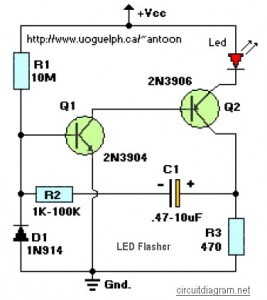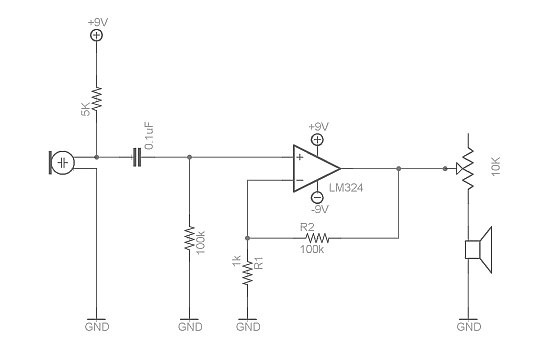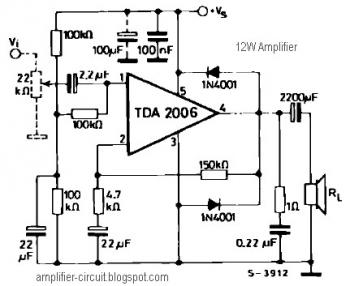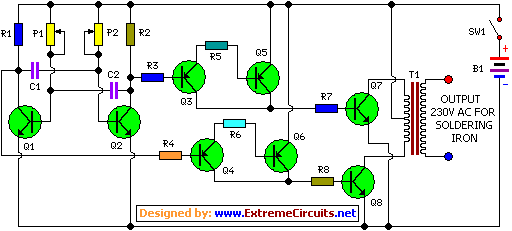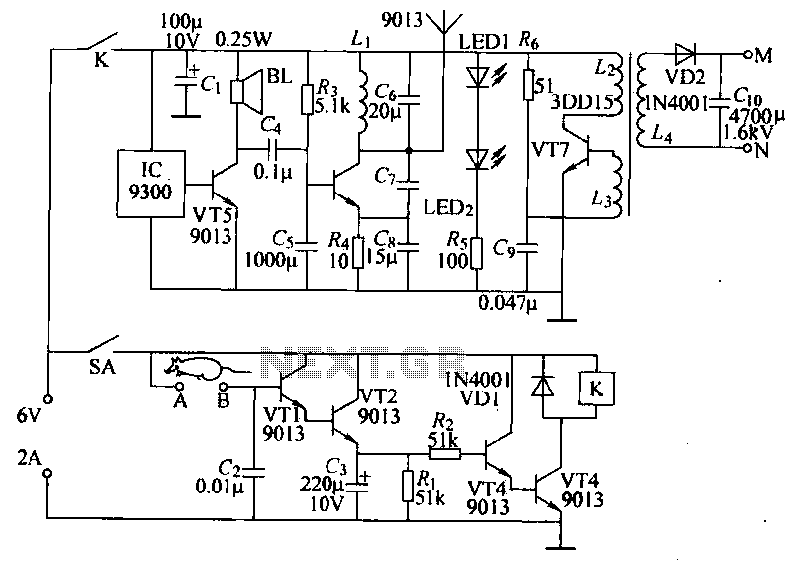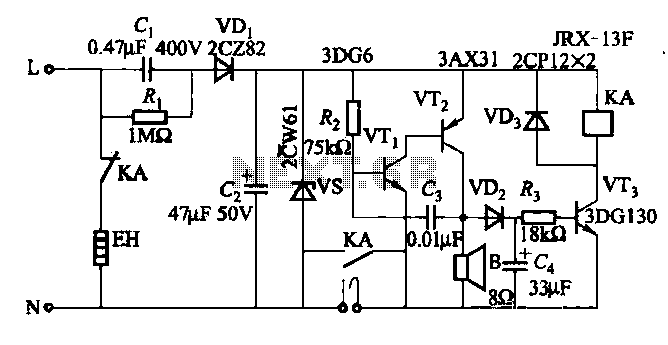
intercom circuit with transistors
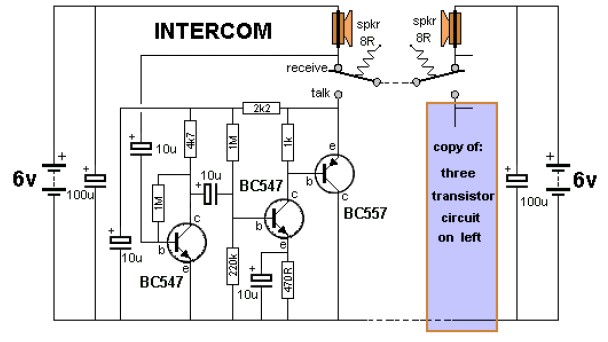
The key to avoiding instability (motor-boating) in a high-gain circuit is to power the speaker using a separate power supply. This circuit design allows for the connection of one or two additional stations. It is recommended to construct the circuit within two separate enclosures for the two stations. Each enclosure should feature two ports: one for the external power supply (if an external power source is used instead of a battery) and another for connecting to other stations. Additionally, create openings for a speaker push-on switch.
To ensure optimal performance and stability in high-gain circuits, the implementation of a dedicated power supply for the speaker is crucial. This approach minimizes the risk of feedback and oscillation, commonly referred to as motor-boating. The design accommodates the integration of multiple stations, enhancing versatility in applications such as audio distribution systems.
The circuit should be housed in two distinct enclosures, each serving as an independent station. This separation not only aids in reducing interference but also facilitates maintenance and troubleshooting. Each enclosure must be equipped with two specific ports: the first is designated for an external power supply, which is preferred over battery power to ensure consistent voltage and current delivery, thereby improving overall circuit stability. The second port serves as a connection point to link additional stations, allowing for a modular setup that can be easily expanded.
Furthermore, the design should include strategically placed holes for a speaker push-on switch. This switch allows for convenient control of the speaker output, enabling users to easily turn the sound on or off as needed. Proper placement of these holes is essential to ensure user accessibility while maintaining the structural integrity of the enclosures.
In conclusion, this circuit design emphasizes the importance of using a separate power supply for the speaker to prevent instability, while also providing flexibility for connecting multiple stations. The careful construction of the enclosures and the inclusion of necessary ports and switches contribute to a robust and user-friendly audio system.The secret to preventing instability (motor-boating) with a high gain circuit like this is to power the speaker from a separate power supply! You can connect an extra station (or two extra stations) to this circuit design. Build the circuit into two separated boxes (for 2 stations). On each box should be use 2 ports for external power supply port (if you use external power supply, not battery) and connection port to other stations. Create some holes for speaker push on switch. 🔗 External reference
To ensure optimal performance and stability in high-gain circuits, the implementation of a dedicated power supply for the speaker is crucial. This approach minimizes the risk of feedback and oscillation, commonly referred to as motor-boating. The design accommodates the integration of multiple stations, enhancing versatility in applications such as audio distribution systems.
The circuit should be housed in two distinct enclosures, each serving as an independent station. This separation not only aids in reducing interference but also facilitates maintenance and troubleshooting. Each enclosure must be equipped with two specific ports: the first is designated for an external power supply, which is preferred over battery power to ensure consistent voltage and current delivery, thereby improving overall circuit stability. The second port serves as a connection point to link additional stations, allowing for a modular setup that can be easily expanded.
Furthermore, the design should include strategically placed holes for a speaker push-on switch. This switch allows for convenient control of the speaker output, enabling users to easily turn the sound on or off as needed. Proper placement of these holes is essential to ensure user accessibility while maintaining the structural integrity of the enclosures.
In conclusion, this circuit design emphasizes the importance of using a separate power supply for the speaker to prevent instability, while also providing flexibility for connecting multiple stations. The careful construction of the enclosures and the inclusion of necessary ports and switches contribute to a robust and user-friendly audio system.The secret to preventing instability (motor-boating) with a high gain circuit like this is to power the speaker from a separate power supply! You can connect an extra station (or two extra stations) to this circuit design. Build the circuit into two separated boxes (for 2 stations). On each box should be use 2 ports for external power supply port (if you use external power supply, not battery) and connection port to other stations. Create some holes for speaker push on switch. 🔗 External reference
